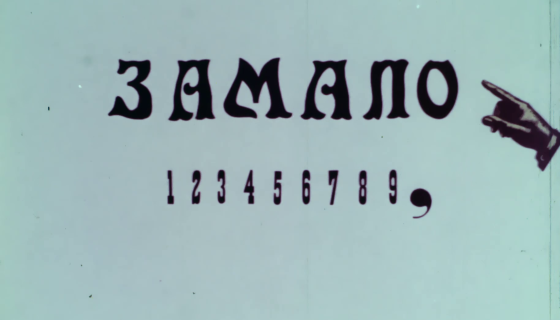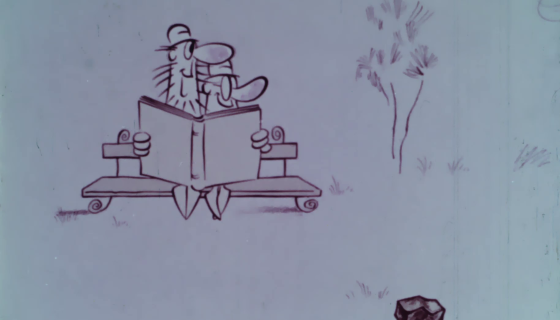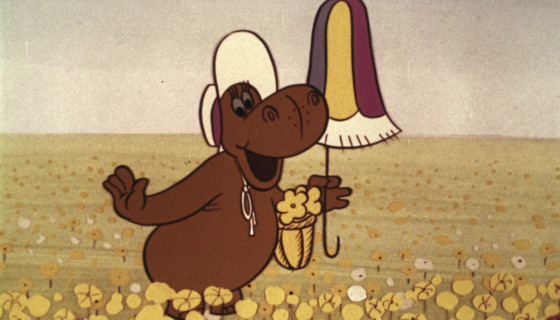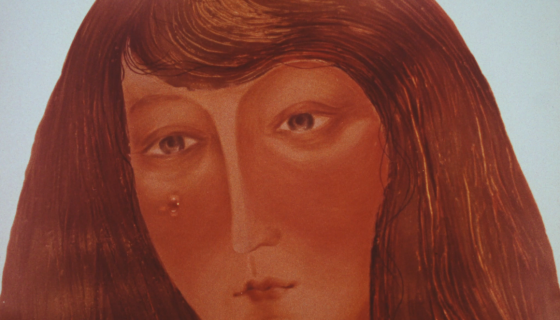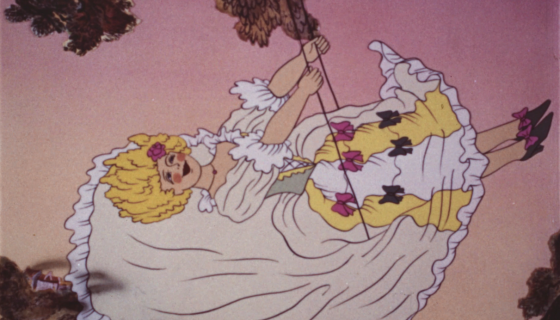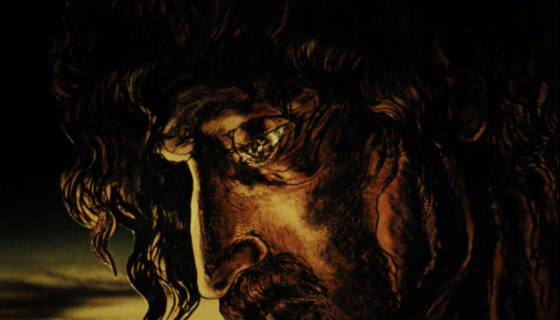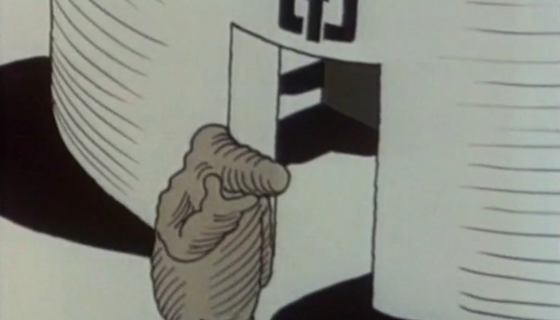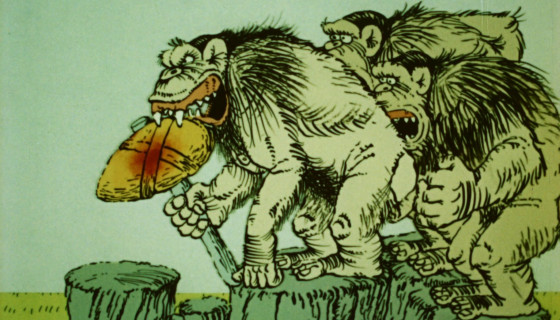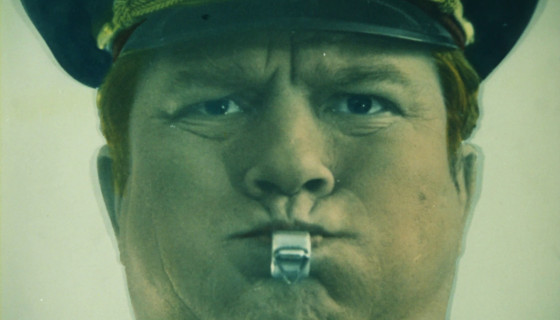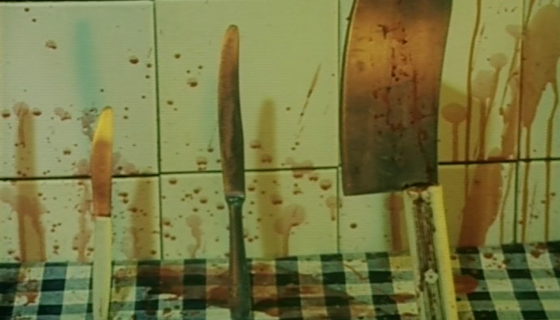06.10 | 20:00
12+
The retrospective programme "Volodymyr Goncharov in close-up" was prepared by the Dovzhenko Centre for the LINOLEUM festival. It showcases a wide range of topics and interests of the director - from the history of Kyiv Rus to the secrets of the world structure, from the mechanics of creativity and to the deconstruction of Soviet propaganda. All his animation works are marked with deep philosophical content and humanistic ideas, combined with a parable form of narration and a refined artistic and figurative style. The programme presents films scanned by the Dovzhenko Centre in 2022-2023.
Volodymyr Goncharov (February 9, 1940 – January 14, 2022) is an outstanding Ukrainian director, animator and artist. He started in the 60s as an animator and artist, and in the 80s and 90s, he became one of the key directors and ardent critics of the system.
Running time 90 min.
-
USSR | 02:30 | 1968
The first short story from The Stone on the Road series. In the world of Numbers, everything is subject to a strict system and the supreme ruler – Zero. Its greatness grows in proportion to the other numbers’ fear. The other numbers are inherently bigger and more significant than Zero, but only Zero has a voice, which makes it great. The film uses the cutout animation technique and resembles Terry Gilliam's collage animation, the hallmark of the Monty Python comedy troupe.
-
USSR | 02:41 | 1968
The last short story from the eponymous series. This film is minimalistic in its visual solution, with strict lines and no bright colours, and tells about human mischief. A man stumbles over a stone on the road. Of course, it is annoying, painful and unpleasant, but he quickly finds solace in the misfortune of another poor guy who has stumbled on the same stone. And together, they are happily waiting for the next victim.
-
USSR | 09:09 | 1974
A little hippopotamus is looking for his most beautiful mother in the world. On his way, he goes to the city, where he visits a film studio and even a zoo. However, only by involving an experienced detective dog will he be able to find her. Elements of a detective story and a musical are introduced into the film's plot, which gives it a parodic tone, but does not diminish the importance and seriousness of the animal protection issue raised in the film.
-
USSR | 09:30 | 1981
The brothers Kyi, Shchek and Khoryv created a city on the bank of the Dnipro River and named it in honour of their older brother. They have a sister – Lybid – one can't take their eyes off her! Ancient Kyiv lives, and feasts, but a black cloud looms over it. Based on the legend about the city's creation, the cartoon's authors explored the white pages of history and imagined what happened to Kyiv and its founders.
-
USSR | 10:30 | 1983
In a tiny fairy-tale city, on a big fairy-tale tree, thoughts lived — Smart and Stupid, Good and Evil, Cheerful and Strange. Because of them, all good, bad and incredible events happen in the city. Strange, the most restless among the sisters-thoughts, is trying to find a mysterious, unknown master who is supposed to change the life of the whole city.
-
USSR | 10:30 | 1984
Before the Inquisition court, Giordano Bruno meets a mysterious man who offers him to renounce his ideas in exchange for freedom. The stranger's arguments are convincing, and for someone who believes in the infinity of the universe, the fire of the Inquisition is not scary. So who came to Giordano in the last hours of his life: the devil, God or common sense?
-
USSR | 10:00 | 1986
Two very similar in shape but different in character anthropomorphic entities walk side by side on the path of life. This union looks quite parasitic and unprofitable for one of the parties. Once this is realised, will it lead to a breakup? Will their relationship turn into symbiosis over time?
-
USSR | 10:00 | 1987
This is a story about one of the inhuman wars. Inhuman in a sense without people, but about them. Two tribes of apes are constantly at war. Gradually mastering such objects as a stick and a stone makes it easier for them to destroy rather than create. The global nature of the idea of this short film through cinematic quotes from Stanley Kubrick's A Space Odyssey obviously refers to the arms race between the two superpowers, the USA and the USSR. But the main thing is that the film prompts the viewer to think about the responsibility of a person with a weapon.
-
USSR | 09:40 | 1988
In the film’s preamble, the superstructure of yesterday's state apparatus is presented as a pyramid, supported by a sculpture "Worker and collective farm woman" instead of an athlete. Symbols of history on this pyramid: Stalin, Khrushchev, Brezhnev. In the meeting rooms, dolls mindlessly vote automatically, picking up mandates. Pompous demonstrations, slogan shawl. And finally, the fall of Brezhnev's mannequin, which destroys the whimsical pyramid.
-
Ukraine | 10:11 | 1991
A horror almanack of three short stories. The first tells about a piece of meat hunted by abstract hands, knives and forks around the kitchen, wanting to make mincemeat out of it. The second is about a mysterious guest from unknown worlds who troubles the peace of one company at night. The third is about Kolobok, who tries to swallow hungry animals on his way. Combining different techniques and styles, directors Volodymyr Goncharov, Vadym Tiuriaev, Oleksandr Bubnov and Valerii Konopliov created a series of experimental works united by the incredible imagination of the authors and numerous whimsical images that you rarely find in classic Ukrainian animation of the 1960s-1980s.
